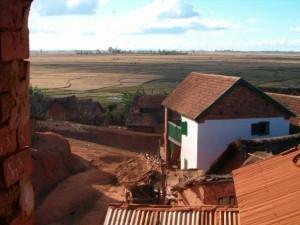
My job-market paper — for nonacademics, that’s the paper I presented when giving recruitment seminars when I was on the job market back in 2006 — is finally published.
From the latest issue of Land Economics:
Most studies of tenurial insecurity focus on its effects on investment. This paper studies the hitherto unexplored relationship between tenurial insecurity and land tenancy contracts. Based on distinct features of formal law and customary rights in Madagascar, this paper augments the canonical model of sharecropping by making the strength of the landlord’s property right increasing in the amount of risk she bears within the contract. Using data on landlords’ subjective perceptions in rural Madagascar, empirical tests support the hypothesis that insecure property rights drive contract choice but offer little support in favor of the canonical risk sharing hypothesis.
After working on this on and off for almost ten years, I am glad to finally see this article in print.
It seems like it was just yesterday that I was telling Chris Barrett, who became the chair of my dissertation committee, that I wanted to write a dissertation on sharecropping, and that he was telling me about a very interesting feature of the land tenancy market in Madagascar. Namely, that landlords appeared to be choosing sharecropping over fixed rent because fixed rent implied a higher likelihood that they would lose their land.
As Chris can attest, I doubted that hypothesis for a very long time, coming up with alternative theoretical explanations in the first essay in my dissertation, but there it is in the data.
The really hard part, however, was to sell the idea that the shape of land tenancy contract (rather than the act of leasing a plot out in and of itself) was associated with varying degrees of tenurial insecurity, as this was yet unheard of.
It took me a long time to finally come up with a coherent explanation for why that might be. I found it when I finally read Ellickson’s Order Without Law (which I blogged about a few months ago) during the fall of 2011.
But for all the frustrations this paper has been the cause of, it has been a tremendous learning experience. Now, let’s just hope that it was all worth it, and that people read and cite it.